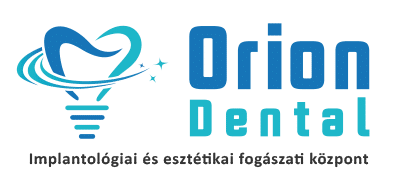Guided bone regeneration, bone replacement procedures
After tooth extraction, the socket (alveolar ridge) surrounding the teeth begins to resorb pretty slowly, this process being the fastest in the first half year after tooth extraction. This process can be further worsened by various pathological conditions, such as bone necrosis due to periodontitis (inflammation of the gums), inflammatory processes of dental origin, cysts or trauma. Consequently, it is very important to replace your teeth as soon as possible and/or treat these conditions.
Unfortunately, despite all our efforts, we often encounter cases where there is not enough bone available to place an implant. You should not worry however, there are a number of routine procedures to create adequate bone for implant placement. In general, we use different methods and materials to create an environment / frame where ossification can begin.
A special dental CT (CBCT) is required to accurately evaluate bone volume and quality.
Sinus lift
In the area of the upper teeth, the roots are often separated by only a few millimetres of bone tissue from the base of the sinus cavity (paranasal sinus). After the teeth are removed, this amount of thin bone thickens further. In this case we need to “elevate” the sinus in order to create an adequate amount of bone for the placement of the dental implant.
Internal sinus lift (closed sinus lift)
This is a surgical procedure used when only minor bone deficiency is present. After pre-drilling the implant, the mucosa of the sinus cavity is lifted through the hole and the bone substitute material is delivered under it, then the implant is inserted.
External sinus lift (open sinus lift)
A surgical procedure for the repair of a larger bone defect, in which a “bony-window” is prepared on the outer wall of the maxilla by dissecting the gums and through the window the mucosa of the sinus is carefully elevated through it. The space thus formed is filled under the mucosa with a bone substitute, and finally the bone window is closed with a membrane or just the gingival flap. When a certain amount of minimum bone volume is available, the procedure can be conducted at the same time as the implant placement. It is important for the sinuses to be healthy. If someone has multiple or chronic sinusitis the surgery is not recommended. Post-operative complaints are usually rare; however, nose bleeding may occasionally occur. It is strictly forbidden to blow your nose after surgery for two weeks!
Apart from sinus lift, we also distinguish other bone grafting treatments. In general, they are intended to increase the height and/or thickness of the bone structure at the intended area of the implant. A variety of techniques are available for this, depending on the bone volume and the professional performing the operation, a number of solutions can be used.
Lateral augmentation
In many cases, the thickness of the jawbone is not sufficient for an implant. This can be restored with your own bone graft, which can be done either from within the mouth, usually from the area of the lower wisdom teeth, or with the help of commercially available bone substitutes and membranes. These substances are usually of animal (bovine / porcine) or human origin, which are completely safe to use and will be absorbed. The role of the granular bone substitute is to form a special skeleton along which the ossification process can begin.
The granular bone material itself is usually covered with a special absorbable (sometimes non-absorbable) membrane so that it can heal. This can also be done at the same time as the implants are placed, depending on the amount of bone present. However, if there is not enough bone available for simultaneous dental implantation, we need to wait for a minimum of six months for adequate bone development. Bone regeneration is assessed with CBCT examination before further surgery.


